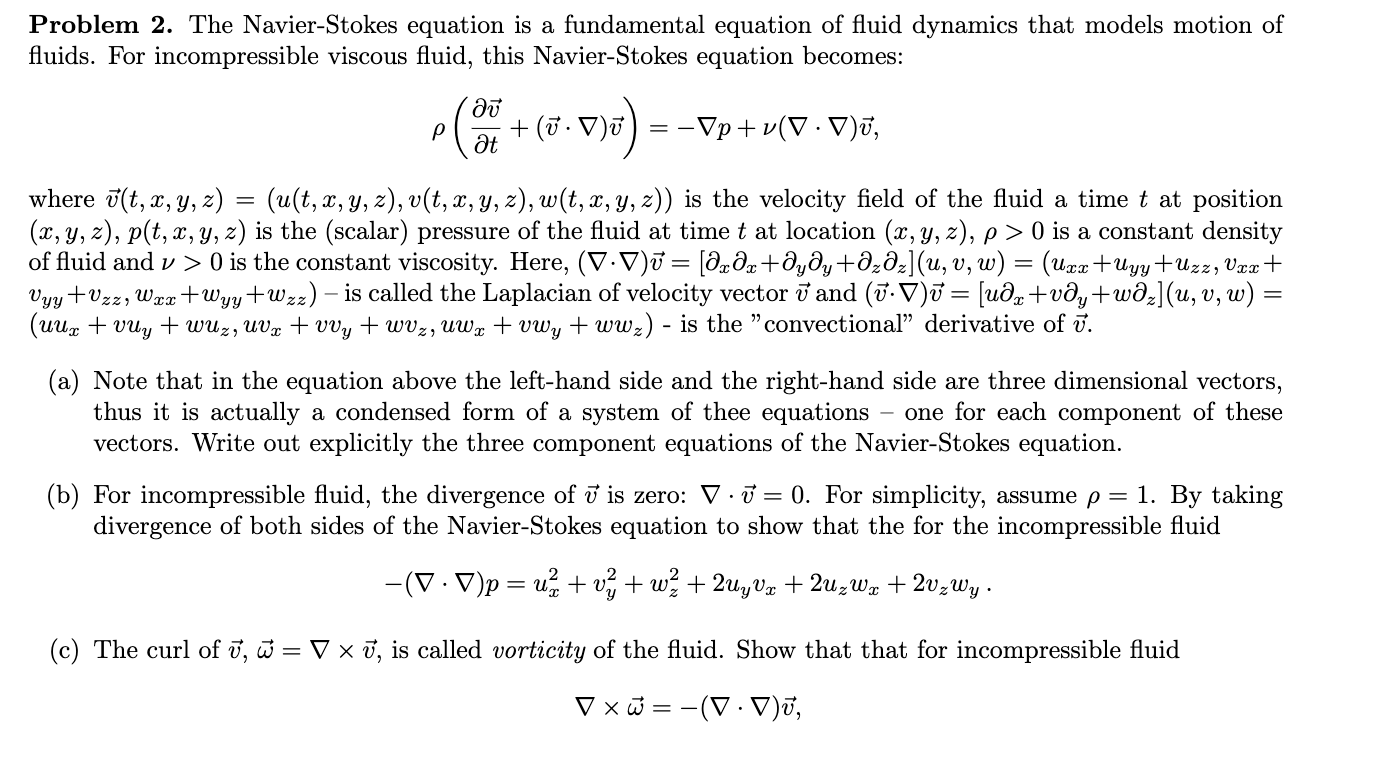(Solved): Problem 2. The Navier-Stokes equation is a fundamental equation of fluid dynamics that models motio ...
Problem 2. The Navier-Stokes equation is a fundamental equation of fluid dynamics that models motion of fluids. For incompressible viscous fluid, this Navier-Stokes equation becomes:
\rho ((del(vec(v)))/(delt)+((vec(v))*grad)(vec(v)))=-gradp+
u (grad*grad)vec(v),where
vec(v)(t,x,y,z)=(u(t,x,y,z),v(t,x,y,z),w(t,x,y,z))is the velocity field of the fluid a time
tat position
(x,y,z),p(t,x,y,z)is the (scalar) pressure of the fluid at time
tat location
(x,y,z),\rho >0is a constant density of fluid and
u >0is the constant viscosity. Here,
{:v_(yy)+v_(zz),w_(\times )+w_(yy)+w_(zz))- is called the Laplacian of velocity vector
vec(v)and
(vec(v)*grad)vec(v)=[udel_(x)+vdel_(y)+wdel_(z)](u,v,w)=
(\cup _(x)+vu_(y)+wu_(z),uv_(x)+vv_(y)+wv_(z),uw_(x)+vw_(y)+ww_(z))- is the "convectional" derivative of
vec(v). (a) Note that in the equation above the left-hand side and the right-hand side are three dimensional vectors, thus it is actually a condensed form of a system of thee equations - one for each component of these vectors. Write out explicitly the three component equations of the Navier-Stokes equation. (b) For incompressible fluid, the divergence of
vec(v)is zero:
grad*vec(v)=0. For simplicity, assume
\rho =1. By taking divergence of both sides of the Navier-Stokes equation to show that the for the incompressible fluid
-(grad*grad)p=u_(x)^(2)+v_(y)^(2)+w_(z)^(2)+2u_(y)v_(x)+2u_(z)w_(x)+2v_(z)w_(y).(c) The curl of
vec(v),vec(\omega )=grad\times vec(v), is called vorticity of the fluid. Show that that for incompressible fluid
grad\times vec(\omega )=-(grad*grad)vec(v)